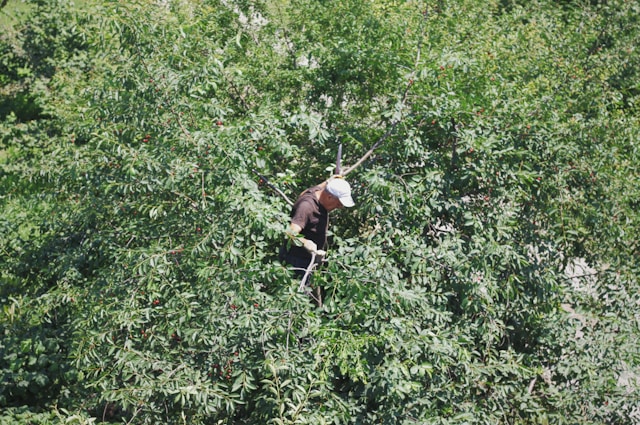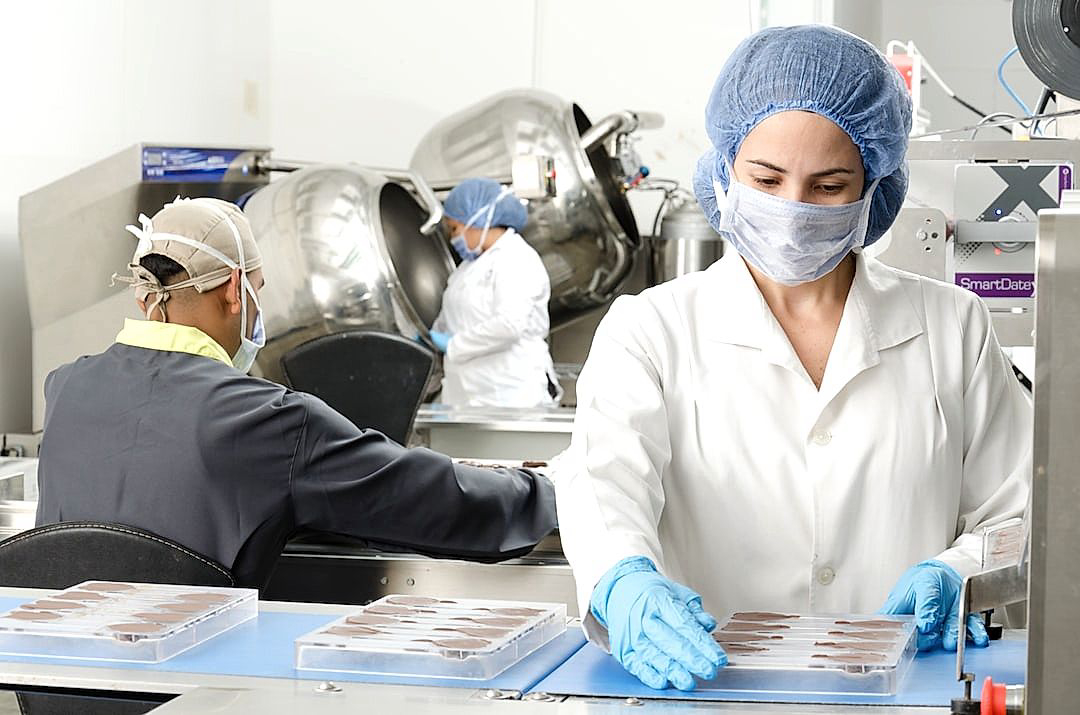In the realm of agriculture, the hard-earned fruits of labor are not just apparent on the trees and in the fields.
It is a testament to the tireless endeavours of those working under the canopy of the agricultural sector – the farmworkers.
The long-standing issue in the industry is their well-being and safety, a subject that has remained largely in the shadows until recently.
Developments over the years have thrust this valid concern into the limelight.
This article shines a light on the innovative strides taken towards ensuring their occupational safety.
A significant shift is underway in produce farms, transforming the lives and livelihoods of these essential workers.
Worker Safety Breakthroughs On Produce Farms
1. Introduction of Automated Harvesting Machinery
Modern technology has brought about numerous advancements in different fields, and agriculture has not been an exception.
Automated harvesting machinery has been a significant development, garnering considerable attention due to the myriad of advantages it presents in terms of worker safety on produce farms.
The incorporation of such technology means alterations to traditional farming methods, which have often been associated with a host of challenges such as backbreaking tasks and safety hazards.
These harvesting machines have been engineered with the primary aim of reducing workers’ exposure to dangers while significantly easing their work.
Produce farming poses distinct threats to workers, especially during harvest time when the work is intense and the potential for injuries is high.
Machinery automation, therefore, aims at eliminating these potential risks, thus leading to enhanced safety and productivity on the farms.
The use of automation in harvesting comes in various forms, such as robotic pickers and automated conveyors, all of which seek to lessen the physical strain on workers.
These machines have been programmed to handle delicate produce with as much care as a human worker would, effectively removing the need for manual picking and handling, a task that usually exposes the workers to injuries.
Automated machinery also mirrors the critical concern of ensuring high produce quality, since machines do not bruise, puncture, or otherwise damage the produce during harvesting or handling.
Automated harvesting machinery has also been beneficial in minimizing workers’ exposure to heat-related illnesses that are common in produce farms.
By reducing the amount of time that workers need to spend in the fields, particularly during the intense heat of the day, automated machines play a crucial role in preventing heat strokes and other heat-related health complications among workers.
Investing in mechanization is a prudent move for farmers wishing to streamline their operations and significantly improve worker safety.
While the initial investment in automation may be high, the long-term benefits to both the agricultural output and worker safety make it a worthwhile consideration.
It’s vital, too, to adequately train workers in the use and maintenance of these machines to mitigate against accidents that may arise due to misuse or failure of the machinery.
Indeed, automation of harvesting machinery is a considerable leap towards creating safer working environments in the produce farming industry.
2. Regular comprehensive safety training sessions.
The importance of regular comprehensive safety training sessions in the agricultural sector, particularly on produce farms, cannot be overemphasized.
Farm workers suffer injuries and/or health conditions due to the lack of proficiency in handlings tools, machines, and hazardous substances.
These training sessions empower farm workers with the necessary knowledge and practical skills to protect themselves and prevent accidents from occurring.
It is crucial that the training is customized to suit the specific needs and hazards associated with each type of produce grown on the farm.
Communication and comprehension are two significant pillars of a successful safety training program.
The training must be delivered in a language that the workers understand and must align with the literacy levels of the attendees.
Another key point to consider is that these safety training sessions should be conducted on a regular basis.
Regular training ensures that safety guidelines are always fresh in the minds of the workers and that they are updated with any new safety-related developments.
Moreover, these sessions provide an interactive platform where workers can ask questions, discuss their concerns and learn from each other’s experiences.
Not only will these safety training sessions help in reducing workplace accidents, but will also promote a culture of safety where every worker feels accountable for their safety and the safety of their coworkers.
Many farms have already seen significant improvements in worker safety due to the implementation of these regular comprehensive safety training sessions.
Conducting these training sessions may require investment in terms of resources (time, money, and efforts), however, the gains in terms of the reduced number of accidents, improved moral and productivity of the workforce, and potential savings in medical costs and compensation payouts make it a worthwhile investment.
Even smaller farms that may not have the means to conduct extensive safety training sessions can still provide basic training to ensure workers are aware of the necessary safety guidelines.
Furthermore, these farms can reach out to external agencies or occupational safety organizations that offer training resources or conduct workshops for small-sized and medium-sized enterprises.
Ultimately, regular comprehensive safety training sessions are an essential element of ensuring worker safety on produce farms.
Therefore, giving it due attention and investment will not only safeguard the health and lives of farm workers but also contribute to the overall success of the farm.
3. Use of Personal Protective Equipment (PPE)
The Use of Personal Protective Equipment (PPE) is an essential part of ensuring worker safety in the agricultural sector, particularly on produce farms.
When it comes to ensuring the safety and well-being of workers in hazardous conditions such as these, many types of personal protective equipment come into play, each with a specific purpose.
Protective clothing, such as coveralls and aprons, are paramount in protecting the skin from harmful substances, and in preventing the spread of germs.
Similarly, safety eyewear is crucial in guarding the eyes against flying debris and hazardous substances.
Another equally important example of PPE is respiratory protection, such as high-quality masks and respirators, protecting workers from substances that can harm the lungs.
Use of appropriate footwear is another important aspect of PPE, playing a key role in preventing injuries due to slipping, tripping, and falling, as well as protecting against heavy objects or sharp tools that might accidentally injure the foot.
Also, correct gloves selection is essential for safeguarding the hands from chemicals, cuts, and abrasions, as well as from contagious contaminants.
Moreover, the use of hearing protection such as earplugs or earmuffs are an important consideration in scenarios where high levels of noise can lead to hearing loss.
In addition, the benefits of PPE extend well beyond the direct prevention of injuries because they also enhance the workers’ confidence while performing their tasks.
This boost in morale translates into increased engagement, productivity, and overall job satisfaction, leading to a more content and healthier work environment.
However, it’s important to note that while PPE is vital, it’s also a last resort in the hierarchy of controls for worker safety – to be used when it’s not possible to eliminate the risk otherwise.
As such, PPE doesn’t replace the need for other safety measures such as automated harvesting machinery, regular comprehensive safety training sessions, implementation of ergonomic workstations design or heat illness prevention programs.
Furthermore, it’s crucial that the usage of PPE on a produce farm isn’t seen as a one-size-fits-all solution.
Because every task, activity and individual on the farm may require a different type of PPE, management should always conduct a risk assessment to identify the appropriate types and uses of PPE for different circumstances.
Moreover, merely providing PPE isn’t sufficient – employers need to ensure that workers know how to use the equipment correctly and understand their roles and responsibilities regarding PPE.
In essence, the utilization of personal protective equipment is an integral part of a comprehensive safety strategy to protect individuals from hazards, thereby contributing significantly toward the safety breakthroughs on produce farms.
4. Implementation of Ergonomic Workstations Design.
The implementation of ergonomic workstations design is a significant breakthrough in ensuring worker safety on produce farms.
The ergonomic approach is centered around designing environments to fit the user, in this case, the workers, rather than expecting the workers to adapt to poor designs.
The key elements of ergonomic design include adjustable workstations, proper lighting, comfortable temperatures, and minimizing heavy lifting or repetitive strains.
Ergonomically designed workstations significantly reduce the risk of musculoskeletal injuries such as back pain, carpal tunnel syndrome, tendonitis, and other work-related musculoskeletal disorders (WMSDs).
Incorporating ergonomics does not only enhance the health and safety of the workers but it also potentially advances productivity, job satisfaction, and lowers absenteeism.
“Effective ergonomic improvements can improve the long-term health of farmers, improve productivity, and ensure more efficient use of resources.”
Automated pickers, ergonomic hand tools, and machines equipped with adjustable seats and controls are some of the ergonomic interventions in use on modern farms.
A considerable part of ergonomics also involves employee training and involvement. Workers are trained to identify signs of musculoskeletal strain, emphasized on the benefit of taking short regular breaks, and included in the decision-making process for choosing and implementing ergonomic strategies.
Consultation with professional ergonomists can make a noticeable difference in tailoring these solutions to the particular challenges that farmworkers face.
However, creating ergonomic workstations does require the initial investment of money and time for research and adjustments, but the potential returns in terms of health benefits and productivity are immense.
Ergonomics is a dynamic process and adjustments to the workstation designs should be made regularly with the changing nature of tasks, equipment, and personnel.
Farm safety audits, regular equipment checks, and open communication channels are just some of the strategies used to continuously assess and adapt ergonomic designs.
Farm owners can also benefit from the range of subsidies, grants, and tailored advice on offer from governmental and non-governmental organizations to help implement ergonomics.
The agricultural industry is now increasingly embracing ergonomics ideas and standards. This has had a positive impact on the health, safety, and happiness of workers and improved the overall efficiency and productivity of the industry.
In summary, farm worker safety on produce farms can be hugely enhanced through the effective implementation of ergonomics; not just in the design of the workstations but in the broader sense of carrying out tasks efficiently without any harm.
5. Implementation of heat illness prevention programs.
The high temperatures experienced in agriculture environments often pose a significant risk to the health and safety of works.
Heat-related illnesses such as heat stroke, heat exhaustion, and heat rash can have grave consequences, affecting both the worker’s health and productivity.
To combat these effects, the implementation of heat illness prevention programs in produce farms has become a fundamental step in safeguarding worker safety.
A vital aspect of these programs is the provision of adequate water supplies in the workplace.
Workers should be encouraged to drink water frequently, to stay hydrated and overcome the dehydrating effects of heat.
Moreover, these programs also promote regular breaks in shaded areas to help mitigate the impact of direct sunlight.
Educational training in recognizing the signs of heat illness and the steps to take when they are present is also crucial in these programs.
Clear processes should be in place to help employees respond swiftly and correctly when colleagues show signs of heat-related illness.
Furthermore, a proper acclimatization strategy should be part of the heat illness prevention program.
This strategy helps workers, especially those new to the high heat conditions, to gradually adjust to the working environment without compromising their health.
In extreme heat conditions, it is essential to reduce the work rate or provide more frequent rest periods, allowing the body to cool down.
Employers should also consider investing in personal cooling gear for workers like cooling vests and neck wraps.
Finally, the integration of a heat alert program, which provides warnings when the weather is set to reach dangerous temperatures, can be a useful tool.
This program would allow for essential preparations and modifications to work schedules during extreme heat conditions.
The implementation of heat illness prevention programs signifies a major leap in not only preserving workers’ health and safety but also increasing their productivity and overall job satisfaction on produce farms.
As agricultural activities are projected to continue rising, efforts must be sustained in employing more of such groundbreaking worker safety programs.
The Bottom Line
Automation in the agricultural field has brought significant benefits and opportunities, however, it also poses new safety risks.
Constant safety training sessions, along with the provision and correct use of personal protective equipment, are crucial in maintaining worker’s safety within these settings.
As technology advances, ergonomically designed workstations reduce physical strain and increase efficiency.
Lastly, programs to prevent heat illness amidst intensifying global warming concerns provides an essential protective measure for outdoor workers.
Therefore, fundamentally, harmonizing technology with worker safety necessitates both innovation and commitment to stringent health measures.
Through these combined efforts, we can shape a future where advances in farming technology will be synonymous with enhanced worker safety.




